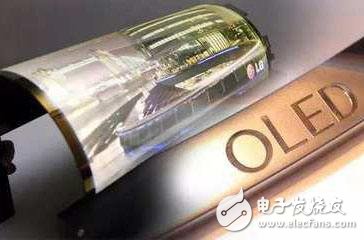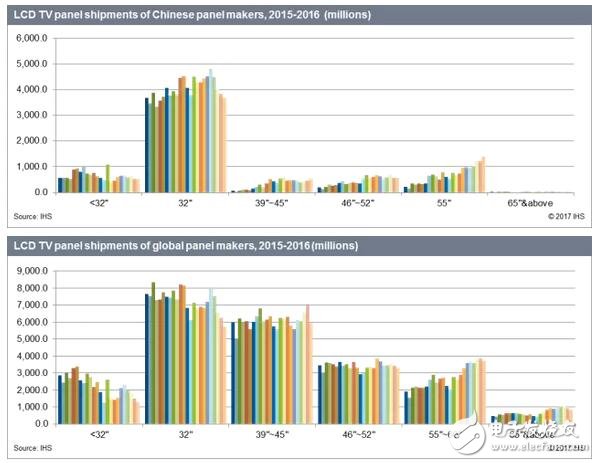Recently, as the tension between China and South Korea due to the deployment of Sade has been extended to the economic and trade field, in the electronics industry chain, the panel industry has also heard a boycott of South Korea. Experts estimate that South Korea's total economic loss may be 17 trillion won, which is equivalent to a gross domestic product (GDP) that is 1.07% less. In April, the market once again reported that the Chinese government requires TV manufacturers and other companies to boycott Korean panels and not purchase from LGD and Samsung. Before the production capacity of local panel makers such as BOE and Huaxing Optoelectronics caught up, they turned to Taiwan's Innolux and AUO to purchase. According to IHS Markit's latest large-size panel shipment report, in January this year, mainland panel manufacturers, including BOE, Huaxing Optoelectronics and CLP Panda, shipped LCD TV panels accounting for 33.2% of global LCD TV panel shipments that month, slightly It is lower than 36.4% of Korean manufacturers, but it is significantly ahead of 27.6% of Taiwanese manufacturers. Taiwan, which is highly overlapping with South Korea ’s industry, has no capital for gloating, especially cross-strait relations have reached an impasse after Tsai Ing-wen took office, followed by Sino-US trade disputes, Made in China 2025, and other issues. 1. The guns and fires, South Korea ’s bitter results today, will become Taiwan ’s nightmare tomorrow. The expansion of geopolitical risks on the Korean peninsula has affected the shipment of major South Korean electronic component manufacturers such as Samsung, LG Display, and SK Hynix. South Korea is now the world's largest supplier of memory and panels. Whenever the panel and memory are out of stock recently, once the North Korean war begins to affect the shipment of Korean factories, the impact on the global electronics industry is huge. South Korea is a major producer of DRAM and NAND Flash. It is estimated that the production capacity will be as high as 50% to 60% and 30% respectively. Once it cannot be produced or exported due to war, it will have a considerable impact on the DRAM industry. The current tension in North Korea seems to be Immediately triggered more attention; Wu Yating, research associate of DRAMeXchange, a researcher of Jibang Technology, analyzed that DRAM is currently in tight supply. If further provocations occur, it may cause further panic among buyers, which will push up a new wave of DRAM gains. The legal person believes that if the United States and North Korea really go to war, manufacturers with production capacity are expected to benefit. The Taiwan factories are mainly South Asia Branch and Winbond. Wu Yating pointed out that DRAM supply is tight. Since this year, buyers have been nervous about hoarding goods in advance. Under the North Korean incident, the buyer ’s mentality may be more tense. She said that tight supply can be seen from two aspects. One is On the psychological level, one is the impact on the substantive level. At present, there is no sign of war, but if there is further provocation, causing buyer panic, the first step will be that the price of DRAM will rise first, and then push up a wave of gains. . The legal person believes that once North Korea really breaks out, manufacturers with DRAM capacity will benefit. At present, South Korea ’s DRAM production capacity totals 50% to 60%. Taiwan ’s South Asia Branch and Winbond are estimated to be about 2%. In addition, In the case of buyers scrambling for production capacity, the module factory may also be affected indirectly. In fact, the price of DRAM has maintained its upward trend this year. According to the latest DRAMeXchange research, due to the frequent quality problems of the original advanced process, the tight supply of standard memory in the second quarter has not eased, and the price increase has exceeded the expected. From the transaction price, the average price of the 4GB DDR4 module contract in the second quarter came to US $ 27, an increase of about 12.5% ​​compared to US $ 24 in the first quarter. Overall, the upward trend of memory prices in the second quarter has not changed. In addition to the standard memory, the increase in server memory is also quite obvious, and it is estimated that it will reach 10-15%. Mobile memory is the one with the smallest increase at present. Before the shipment momentum of smartphones in China has yet to increase significantly, it is estimated that mobile memory in the second quarter will increase by only about 5%. For the sake of growth, the increase was higher, reaching about 5%.
Telephone Cables
Telephone Cables,Telephone Cable Wire,Retractable Phone Cord,Telephone Line Cord CHANGZHOU LESEN ELECTRONICS TECHNOLOGY CO.,LTD , https://www.china-lesencable.com
